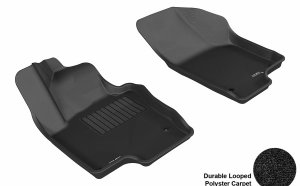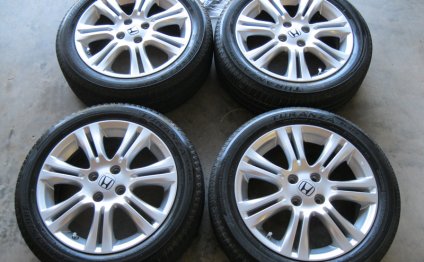
2010 Honda Fit maintenance Schedule
Help assure your vehicle's future reliability and performance by paying extra attention to how you drive during the first 600 miles (1, 000 kilometers). During this period:
- Avoid full-throttle starts and rapid acceleration.
- Avoid hard braking. New brakes need to be broken in by moderate use for the first 200 miles (300 km).
Many after-market repair services, such as the mass-marketers (chain stores), hire non-Honda-trained people to work on your high-technology vehicle. Generally speaking, their Honda product knowledge is minimal.
Some ex-dealership technicians open their own independent shops and specialize in that brand of vehicle. However, their "factory" training is usually several years old, so their technical knowledge of current model vehicles will not be as good as the local dealer's technicians, who routinely receive new model training from American Honda.
Honda parts and fluids are manufactured to the same high-quality standards as the original components, and we recommend the use of them every time you have maintenance performed.
It's always a good idea to keep records of all services and repairs of your vehicle. The Service Records feature here on Honda Owners site is a handy way to keep track of each service visit.A Honda dealer’s computer system automatically does this for you, as it maintains Vehicle Service History records electronically. A dealer can review any and all work performed by that store.
There are two very good reasons why you should maintain your vehicle according to the schedule in your Owner's Manual. Regularly maintaining your car is the best way to protect your investment. Proper maintenance is essential to your safety and the safety of your passengers. It will also reward you with more economical, trouble-free driving and help reduce air pollution.Vehicle condition is evaluated at the end of the lease period and you will be charged for abnormal conditions that reduce the value of the vehicle. This includes mechanical condition.
Typically, this indicator displays for several seconds when you turn the ignition switch ON.If you have recently refueled your Honda, this light may display to warn you of a loose or missing fuel filler cap. Check the cap and tighten it until it clicks. If the fuel cap is missing, replace it with a Genuine Honda replacement cap. Tightening the cap will not make the indicator turn off immediately; it may take several driving trips.
If the indicator continues to display after three driving trips, or if the fuel cap was not loose or missing, there may be a problem in one of the engine's emissions control systems. You should have the vehicle checked by the dealer as soon as possible.
You should also have the dealer inspect your vehicle if this indicator comes on repeatedly, even if it turns off as you continue driving.
Depending on the model year of the vehicle, it is typically between 60, 000 and 90, 000 miles. If your vehicle has a timing chain, instead of a timing belt, replacement of the timing chain is not required. Refer to the Scheduled Maintenance section of the appropriate owner's manual for specific information. This is a normal characteristic and is caused by variations in the electrical system created by the onboard computer. The computer controls the output of the electrical charging system to improve fuel economy and minimize vehicle vibration.While the engine is at idle, the computer monitors the electrical usage of the car and then controls the electrical charging system so that it charges just enough to keep up with demand. This change reduces the load on the engine and, in turn, increases fuel economy and reduces vehicle vibration. As electrical accessories turn on and off, the computer changes the rate of electrical charge in response to the changes in demand for electricity. As the computer responds to the addition of electrical load, you may notice a momentary dimming of the lights. For example, the headlights or instrument panel lights may briefly dim as the air conditioning cycles on.
This distortion is called "cross-car distortion." You will notice it when you're watching a vehicle cross in front of your car and also when you're turning left and looking through the right side of the windshield at other vehicles. Front-seat passengers see the same distortion when they look through the left side of the windshield. Since cross-car distortion occurs when you look through the glass at an angle, it may be even more noticeable for short drivers. Wearing nonprescription sunglasses, which tend to reduce depth perception, also may increase the perceived distortion.Some cross-car distortion exists in the windshields of Honda vehicles manufactured since 1994. In fact, all of these recent Honda windshields have this distortion to some degree, and the condition should be considered normal. Because the aerodynamic windshield of recent Hondas is at more of an angle than in the past, the cross-car distortion may be slightly more noticeable, even though the jump distortion is at the same low level as before. These windshields meet all applicable Federal Motor Vehicle Safety Standards for glazing materials, and this minor distortion is allowable within the industry specifications for automotive glass.
For vehicles equipped with the Battery Management System, this message occurs when the battery’s State of Charge has dropped below a predetermined level. The message is intended to inform you that the battery requires charging to guarantee proper performance under all conditions (extremely cold conditions, high electrical system demands, etc).Conditions that may cause the battery charge to drop enough to prompt the BATTERY CHARGE LOW or BATT LOW message are:
Extended time spent with the ignition on, but the engine not running. The affect on the battery is made worse if the radio, lights, heater fan or other accessories are on at the same time.
Driving short trips repeatedly without a longer trip between them. The starter uses a lot of energy when starting the engine. If the engine is not run long enough, the charging system cannot recharge the battery to the level it was at before the engine was started. Running high-demand electrical accessories, such as seat heaters, can make this situation even worse.
Extremely cold weather is also hard on the battery. Not only does it require more energy to start the vehicle in the cold, but the battery just doesn’t work as well.
If any of these conditions occur, and the battery charge drops below a certain level, the battery management system informs the driver that the battery may not be able to start the vehicle in extreme cases by illuminating the BATTERY CHARGE LOW or BATT LOW warning message. While this message does mean the battery charge is low, it usually does not mean that the battery won’t start the engine.
If you see the BATTERY CHARGE LOW or BATT LOW message, don’t panic. It simply means the battery charge is lower than it should be. This can be fixed by taking longer trips between shorter trips, minimizing unnecessary electrical accessory usage during short trips, and spending less time using electrical accessories while the engine is not running.
The battery management system is intended to protect the driver from allowing the battery charge to drop to a point where it cannot start the vehicle. By using it as a guide, not only will the life of the battery be extended, but the chances of the vehicle not starting due to a discharged battery will be greatly reduced.
The Vehicle Identification Number, commonly referred to as the VIN, is a sequence of 17 letters and numbers that is uniquely assigned for each vehicle. The VIN can usually be found on the driver's side dashboard near or under the bottom portion of the windshield. It can also be found in various other places on the vehicle, including the certification label found on the driver's doorjamb.The VIN provides some information about the vehicle. It is typically composed of four sections. The first three digits are called the World Manufacturer Identifier (WMI). This identifies where the vehicle was manufactured or assembled and the type of vehicle it is. Honda has factories in Japan, Canada, Mexico, and the United States. Each factory has it's own identifying code. For example, a VIN starting with 1HG identifies a passenger vehicle manufactured at Honda of America, while 2HG identifies a passenger vehicle manufactured at Honda of Canada. Honda currently has 10 different manufacturing locations.
The next five digits (4 through 8) are the Vehicle Description Section (VDS). These digits provide information on the engine type, body style, and vehicle model type. The ninth digit is a check digit used internally. The 10th digit indicates the model year; letters (except "O" and "Z") were used for vehicles up to the 2000 model year while numbers are used for 2001 and newer vehicles. For example, "X" means the 1999 model year, "Y" is the 2000 model year and "1" represents the 2001 model year. The 11th digit is the plant code. Finally, digits 12 - 17 are the serial number, which is unique to each vehicle.
When you register for Honda Owners Site or add a new vehicle to an existing Honda Owners Site account, you have the option of entering your Vehicle Identification Number (VIN) or Hull Identification Number (HIN).RELATED VIDEO
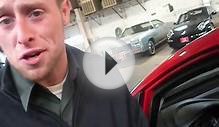
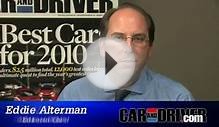
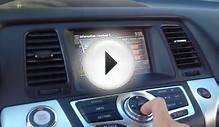
Share this Post
Related posts
2011 Jetta TDI maintenance Schedule
Getting a new car serviced isn t exactly the kind of thing I enjoy. At a minimum, it means I ll be out money and certainly…
Read MorePool maintenance Schedule
The information stated within this document is for reference only, and is not intended to be used as a basis for exact pool…
Read More